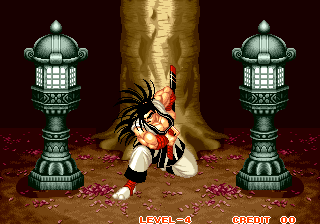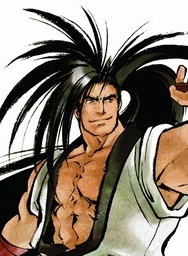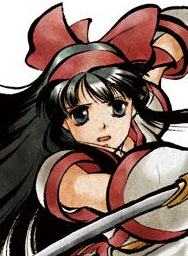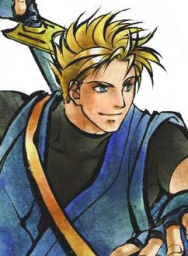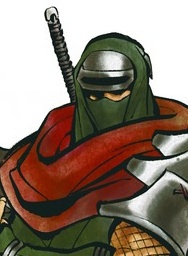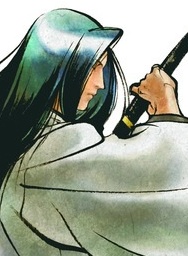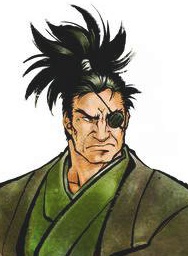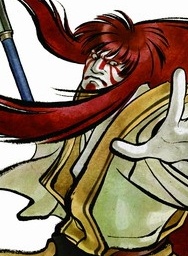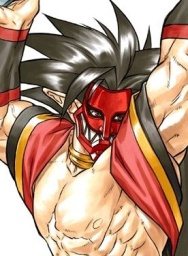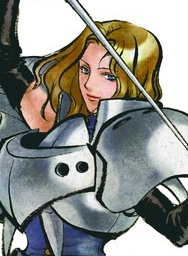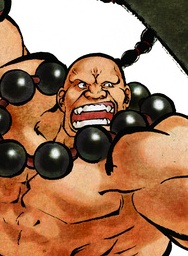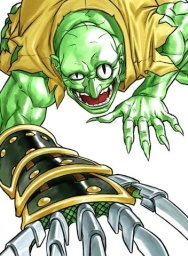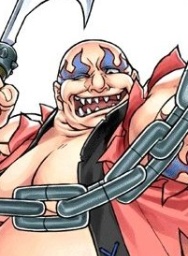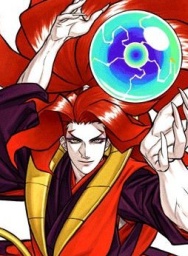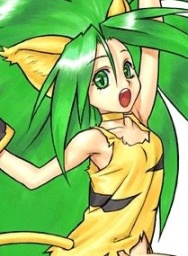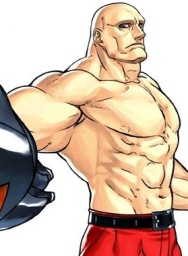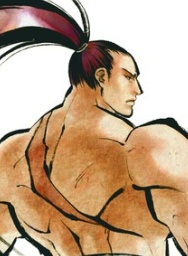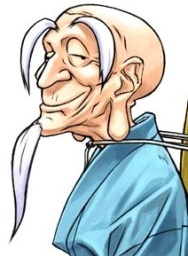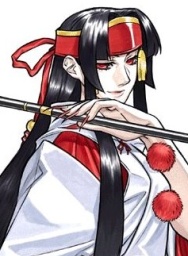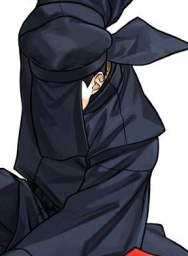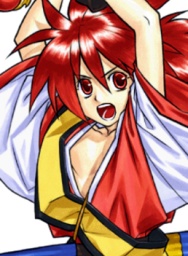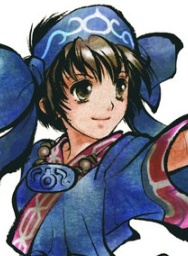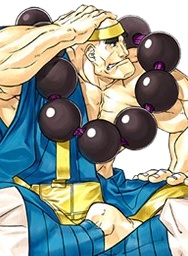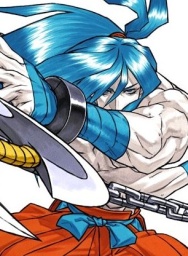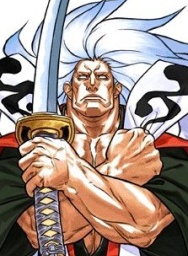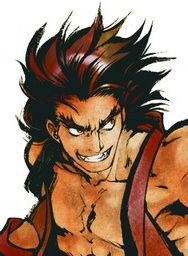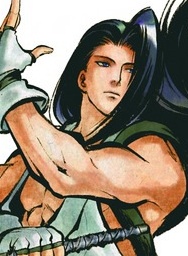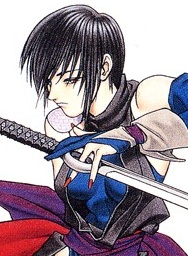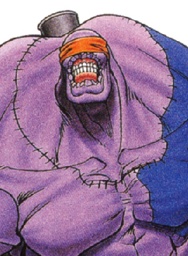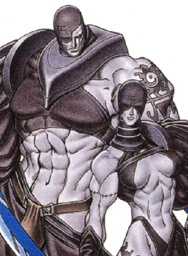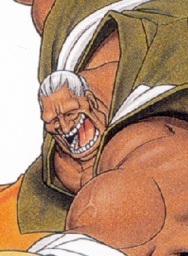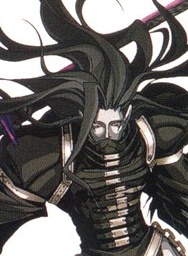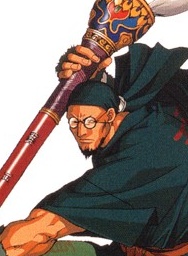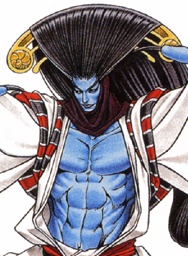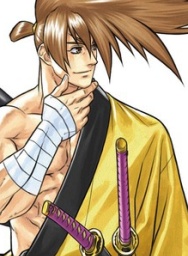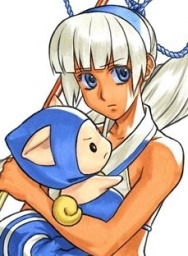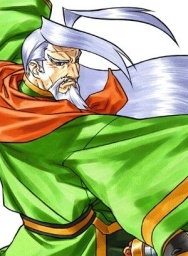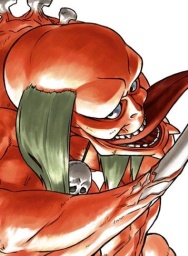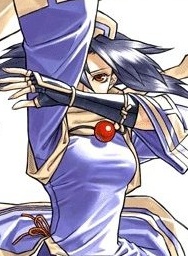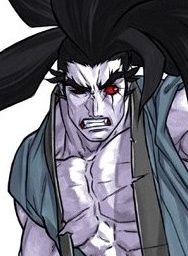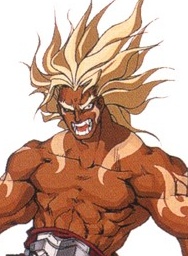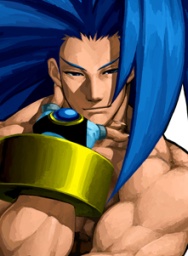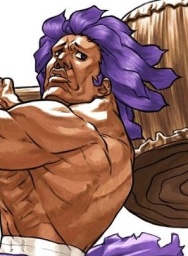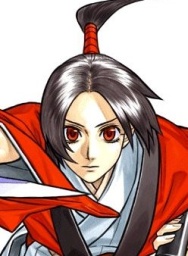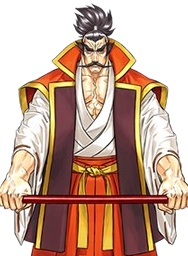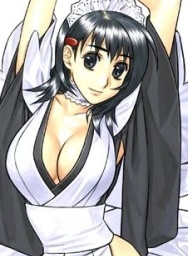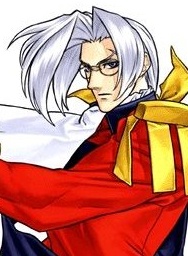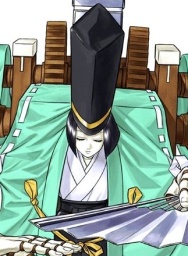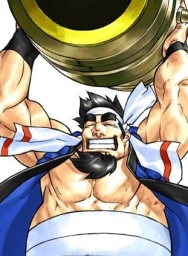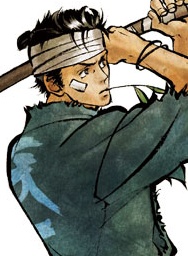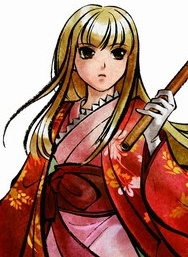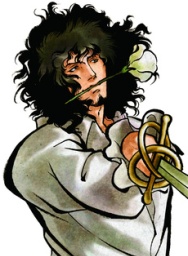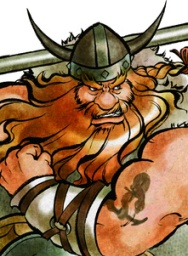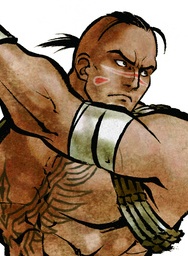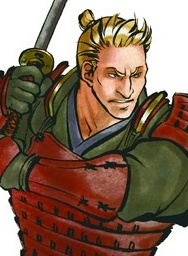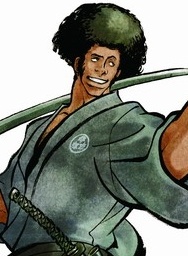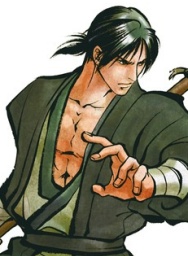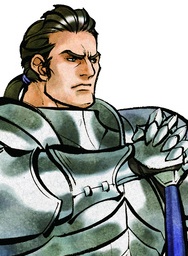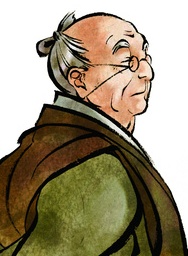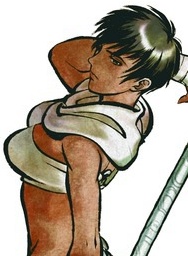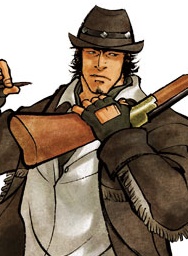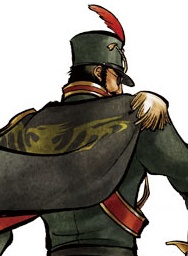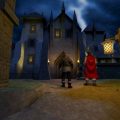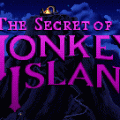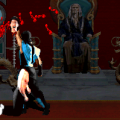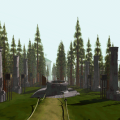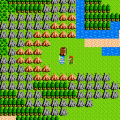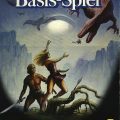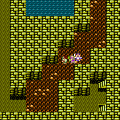- Samurai Shodown (Intro / Characters)
- Samurai Shodown
- Samurai Shodown II
- Samurai Shodown III
- Samurai Shodown IV
- Samurai Shodown V
- Samurai Shodown V Special
- Samurai Shodown 64
- Samurai Shodown (Neo Geo Pocket)
- Shinsetsu Samurai Spirits: Bushidou Retsuden
- Samurai Shodown VI
- Samurai Shodown Slash
- Samurai Shodown Sen
- Samurai Shodown 64: Warriors Rage
- Samurai Shodown: Warriors Rage
- Nakoruru: Ano Hito Kara no Okurimono
- Samurai Shodown (Anime)
When Samurai Shodown first appeared in arcades in 1993, it was a breath of fresh air in a genre already becoming known for rehashes and knock-offs. The game wowed both fighting game enthusiasts and general gamers alike with its uniquely implemented weapon based combat, colorful graphics and sound, and incredible atmosphere. The first entry into the series was released in 1993 for SNK’s then-new MVS system. Samurai Shodown‘s main draw was that it deviated from the norm by arming all of its characters. Instead of fighting barehanded, the combatants duel with Japanese katanas, European rapiers, pole arms, and scimitars.
The Samurai Shodown franchise is infamous for its tense pacing. At a glance, the fighters’ movements and attacks appear to be much more slower than most fighting games. The difference here is that the control response is lightning fast, and a single well timed button press can take off more than half an opponent’s energy. As a drawback, the characters have a much longer recovery period after most powerful moves. In result, the older Samurai Shodowngames are all about tricking your opponent into going for a big hit and then countering. While these mind games are a usable in any fighting game, the Samurai Shodown series was the first to reward them with the inherent nature of its fighting engine. This added layer of depth is where the real intensity of the classic Samurai Shodown games comew from and is one of the major reasons it became so popular immediately upon its release.
Samurai Shodown also takes a note from Art of Fighting, and zooms out when the characters get farther away from each other, allowing for a dynamic view of the duel. In certain installments, a delivery man named Hikyaku will randomly run by to toss extra items onto the battlefield, such as food (good) and bombs (bad). Additionally, a judge character (named “Kuroko” or “Slick” Sukihiro) watches over each fight, declares its beginning and ending, and signals successful strikes with his flags.
Atmosphere is a big part of the Samurai Shodown experience. While there are several songs throughout the series that make use of electric guitars and the typical styles found in contemporary 2D fighters, the majority of the music makes use of traditional Japanese instruments like the shakuhachi along with subtle strings. These tunes are geared towards creating a desolate and lethal mood, all in service of complementing the deadly gameplay. Compared to other Japanese fighting games, the action is also extremely bloody. Although not nearly as over-the-top as Mortal Kombat, characters frequently cut their opponents in half or finish them off with a fatal blow to their jugular.
There are six main fighting games in the series, one RPG interpretation, two original portable titles and four 3D installments. Strangely enough, the main 2D sequels are numbered only in the Western releases, while they only have subtitles in the Japanese games. Moreover, there are also many side stories, drama CDs, arranged soundtracks and several animated movies. Most of the original four games were designed by a group within SNK called Team Galapagos.
The mainline games were released as part of an Anthology compilation for the PlayStation 2 and Wii. The PlayStation 2 version has online play, but only in Japan. All games can be played with original or arrange soundtracks, but strangely, there’s no option to turn off the soft focus filter, forcing you to play with slightly blurry graphics. All of the games beyond the first two also have brief load times. Samurai Shodown V Special is missing entirely. Despite these minor issues, they’re basically perfect ports, so they’re the best way to go. The Wii version has a handful of extra minigames.
Samurai Shodown is an expansive game series, and for a fighting game, its narrative isn’t half bad. The drama CDs describe more about the characters using the (Japanese) voice actors, and are generally quite interesting. Also, a manga was released several years ago which was translated into English by Viz, which features a scant one chapter as it follows Haohmaru and Nakoruru in their fight across Japan. Like the King of Fighters manga licensed out by SNK, it takes too many liberties with the plot to be interesting.
Then there are the arranged soundtracks, which were a norm amongst SNK games. Samurai Shodown 64‘s in particular was weird, but in a catchy way. There are also a lot of collectable figures, and artbooks which are the most engrossing by far. SNK has always had excellent art, and being able to see the different changes throughout the series along with the different artist renditions is a real treat. You can clearly see how the characters started out more lifelike (probably to resemble their historic figures) and slowly became more and more stylized and anime-like.
Samurai Shodown is one of SNK’s most beloved and unique franchises. It’s amazing to think that the Samurai Shodown name has now appeared in more than fifteen different titles, spanning well over a dozen years years among numerous platforms. In fact, the creative character designs have become as much a part of the SNK gaming universe as Kyo, Iori or Terry Bogard. Even though it doesn’t have quite the impact as it did during its heyday, Samurai Shodown continues to be adored by gamers worldwide for its innovation, creativity and Japanese flair that instills its own sense of identity in the fighting genre. To those with patience, a taste for a bit of animated violence and ambient orchestration, there is none better than Samurai Shodown.
Links:
Official Homepage Has descriptions of the main series and character bios.
Samurai Shodown Forever Probably the best English fan site for this series.
Arcade Gear – Samurai Spirits Series A shrine for the Japanese releases.
Thanks to Neo Rasa for writing the intro and comparisons of the console games, Pat R. for extensive proofreading, Deuce for various input (and translating SS RPG!), ReyVGM, Daijoubu, ZZZ, Brian Gazza, MGBenz, and everyone else that contributed to this article.
Characters
Haohmaru
The main hero of the series and an all-around balanced character. Based off historical samurai Miyamoto Musashi. Haohmaru is a free-spirited warrior with a love of sake (rice wine) and his own style of swordsmanship. Beyond the overarching conflict in each Samurai Shodown game, his storyline generally involves wandering throughout Japan, seeking worthy opponents.
Nakoruru
A young Ainu woman from the northern mountains (Orientalist fallacies aside, the Ainu are sort of the Japanese equivalent to the American Indian) who loves nature, and calls upon the assistance of her pet hawk Mamahaha. Her fast, rushing attacks are a bit of an annoyance, but her low damage output keeps things fair most of the time. She also has a dark alter ego named Rera.
Galford
An American ninja with a zeal for justice, justice and more justice. Like Nakoruru, Galford is an animal lover and has a pet dog named Poppy who assists in battle. Despite his use of electricity and disappearing jutsu, this guy is one of the most generic characters in the series. The dog kinda picks up the slack, though. His body sprite is copied from Hanzo’s (or vice versa). Many of his songs are named after “tuna” for some reason.
Hanzo Hattori
The real ninja (Hanzo Hattori was an actual historical figure) and the staple shinobi of the series, Hanzo boasts the infamous Izuna Drop along with some awesome intros and winning quotes, even though he’s just the Galford sprite with a different head. He’s also best chums with Jubei, and makes an anachronistic appearance in The King of Fighters Maximum Impact 2.
Ukyo Tachibana
Ladies’ man and practitioner of Shinmusou Ittou Ryu, a form of Iaido. Ukyo is a hopeless romantic who travels around Japan attempting to please Kei, the woman of his dreams who has already been engaged to somebody else. If the unrequited love angle weren’t tragic enough, Ukyo also suffers from tuberculosis. He’s got a great move where he tosses an apple as a marker and blindly makes quick stabs at the enemy. His character is based off of Musashi’s rival, Kojiro.
Jubei Yagyu
A warrior that works under the Shogunate (Japanese military government) and therefore technically the only character who is an actual Samurai. Jubei is somewhat generic, but his twin blade attacks are really cool.
Tam Tam
A nine-foot tall warrior from an indigenous South American tribe, Tam Tam would reach to the top of the screen if it weren’t for his crouching stance. He travels to Japan to retrieve a relic for his village. Not exactly the most effective character.
Charlotte Christine de Colde
A French noblewoman with a skill for the rapier and a fabulous sense of fashion. Her design is based off of the Versailles manga character Oscar Francois de Jarjayes. Charlotte has a crush on Haohmaru, which is implied rather laughably in the her SNKglish-ridden Samurai Shodown IV ending.
Wan-Fu
For a while, the Chinese-born Wan-Fu was a rather boring character – until he adopted a stone pillar as his weapon in Samurai Shodown 2! It’s a shame SNK only brought him back for Samurai Shodown VI, with a huge mace in place of the pillar. Wan-Fu’s plot revolves around him searching out worthy opponents and making his army more powerful.
Earthquake
A massive Texan ninja who uses a scythe and chain named “FUJIYAMA.” Earthquake becomes a bandit after tiring of his ninja training and seeks to take all the treasure he can. Though his attacks revolve around his massive bulk and gastrointestinal track, Earthquake is surpisingly agile (he is a ninja, after all). His sprite is so huge that he was excised from most of the home conversions of the first game.
Shiro Tokisada Amakusa
The boss of the first game, and the only character to not technically wield a handheld weapon. He instead uses magic, which makes for some spectacular attacks. Like most SNK bosses, he’s annoying and cheap, especially with his multi-hit slap move. Based off a Christian rebel of the same name, Amakusa seeks to shroud the world in darkness and works under a demon called “Ambrosia.”
Cham Cham
Tam Tam’s younger sister and the reason for his storyline in the first Samurai Shodown (since it was her who lost the Pherenx stone of their village). Cham-Cham has a pet monkey (who is actually Tam Tam under a spell) and fights with a giant wooden boomerang. Her fighting style echoes Hayate’s in the later-released Savage Reign (probably why their cards “assist” each other in the SNK vs Capcom card game for Neo Geo Pocket Color).
Genjuro Kibagami
Violent badass and Haohmaru’s main rival. Genjuro defeated Haohmaru in a duel while under the tutelage of Caffeine Nicotine and would have killed him if not for his expulsion from the school. Now he holds a grudge and seeks to kill his former friend as well as anyone else who pisses him off. He’s pretty much the prototype for KoF‘s Iori. Most of his attacks feature Hanafuda cards during their animations.
Nicotine Caffeine
Genjuro and Haohmaru’s elderly sensei. Nicotine fights with a cane and various monk-like talismans. Takes to battle in Samurai Shodown II to answer the threat of Mizuki. He’s also a friend of Kuroko, and the two fought together against Mizuki years before the events of the first game.
Rashoujin Mizuki
The boss of Samurai Shodown II and one of Ambrosia’s chief henchmen, Mizuki seeks to achieve what Amakusa started in the first game. Her SNK Boss powers allow her to summon a demon out of nowhere and generally be a total bitch.
Shizumaru Hisame
An orphan boy introduced in Samurai Shodown III, who seeks revenge on Zankuro for his family’s death and his own amnesia. His weapons of choice are a blade and a rather dangerous umbrella. Shizumaru is a homage to Himura Kenshin, the main character the immensely popular samurai era manga and anime Rurouni Kenshin.
Gaira Caffeine
A big powerful monk fellow and grandson of Nicotine, Gaira fuels the common misconception that buffs are stupid and slow. His Giant Swing attack is very dangerous. Known as Kim Ung Che in the Korean versions.
Zankuro Minazuki
A giant of a man that serves as the end boss of the third and fourth game, and possibly one of SNK’s coolest boss designs. Despite his defeat in both games, he never seems to stay dead. He wields a gigantic katana and his style is called Art of the “Infinitely Peerless Blade.”
Sogetsu Kazama
Kazuki’s arrogant, more level-headed brother who wields water powers in contrast to his brother’s elemental affinity to flame. Sogetsu is sent by the leaders of his village to execute his brother, but is reluctant to do so.
Shiki
A twin-blade wielding swordswoman who was introduced in Samurai Shodown 64 and appears in its sequel, but never made the transition to the mainline 2D games. As a brainwashed servant of Yuga the Destroyer, Shiki travels Japan searching for Haohmaru so she can deliver him to her master and complete her plans. Despite only appearing in two obscure game on an unsuccessful console, Shiki garnered enough popularity to make 2D appearances in SVC Chaos and Neo Geo Battle Coliseum.
Gandara
Massive “doll” monster created by Yuga from the corpses of hundreds of men. Gandara is basically the big henchman that crushes first and asks questions… well, never. Functions as a sub boss in the Hyper Neo Geo 64 games, and is really difficult to beat – perhaps more that Yuga herself.
Deku and Dekuina are sub bosses that only appear in Samurai Shodown 64 right before Yuga. They are clones of Haohmaru and Shiki, and both appear in a cutscene, before one of them is chosen to fight the player.
Asura
The main protagonist of the Hyper 64 game, Asura seeks revenge on Yuga for a tiff they had in the demon world a long time ago. He uses a blade called the Seven Ancient Weapons that can shift and change to meet different uses. His attack names are based off of demons and angels, and his fighting style is somewhat indirect. His 2D sprite for Neo Geo Battle Coliseum looks amazing. Asura has a child with Shiki, who appears Warriors Ragefor the PlayStation.
Taizan Morosumi
Another exclusive character to the 3D Samurai Shodown games, Taizan welds a paintbrush(!) that seals demons, although his bust version uses a spear. He goes after Yuga to get revenge for the death of his family.
Yoshitora Tokugawa
Main protagonist of Samurai Shodown Zero and the title’s poster boy. Uses a seven-sword fighting style and is also rather cheap. Yoshitora sets out to stop his former mentor from doing evil things all around Japan, but the truth may different than what he believes.
Mina Majikina
This scantly-clad female commits utter heresy on the series’ swords-and-melee rule by using a bow and arrow, meaning she can be easy to abuse. Mina sets out to take revenge for her destroyed village. She’s accompanied by a little creature named Chample, who whines and cries constantly during fights.
Liu Yunfei
An elderly swordsman who controls the wind. Yunfei sets out to destroy a spell he released a long time ago and ends up saving Goah in the process.
Rera
Nakoruru’s dark side, Rera is essentially identical to Nakoruru’s bust version. That doesn’t make her design any less cool, though. Unlike her good side, Rera’s not afraid to spill blood for what she needs to get done, for those who are tired of the “nice anime girl” archetype.
Rasetsumaru
Ohh, this is orginal. A demon who, by astonishing coincidence, looks exactly like Haohmaru and fights like his bust version. Character recycling is to be expected to some degree, but this is just plain lazy. SNK/Yuki didn’t even try.
Sankuro Yorozu
Cheapness in the flesh. Sankuro is a huge jackass with a hammer that calls upon three different helpers to paralyze you while he runs in the corner to regain his health.
Yumeji Kurokochi
A female version of Ukyo, save for the fact she can use all characters’ attacks (and take on their forms). Cheap, but less so than Sankuro, Yumeji can be incredibly easy depending on how you fight her. She leaves home after being disowned by her father (Ukyo’s mentor) and devotes herself to Gaoh’s cause.
Gaoh Kyougoku Hinowanokami
The boss of Samurai Shodown Zero. Gao uses a trident and can transform into a demon during the battle, which renders him invincible.
Andrew
Uses a rifle with a bayonet, and appears to be a bad-ass version of Andrew Jackson.
Sugoroku
This fat man wields a golden pot and enjoys wearing a diaper. Apparently he’s supposed to represent a traditional Japanese festival.
Takechiyo
One of the two new protagonist characters exclusive to Samurai Shodown Sen, Takechiyo is a farm boy who decided to become a swordsman, and was taught by Haohmaru. As he wields a bokken (wooden training sword), it’s a mystery how he’s able to lop off limbs and heads with it like all the game’s other characters. Takechiyo was rescued from a shipwreck by Suzuhime, and is searching for her after her mysterious disappearance. He is a well-rounded character with easy combos and fast, long-range piercing attacks.
Suzu
The other new protagonist of Sen. Suzu is a Western girl who was adopted by a Japanese noble after being shipwrecked. She is searching for Golba, who wrecked Takechiyo’s boat and is tied to her unknown past. Her weapon is a massive two-handed sword that she seems barely able to control. She commands huge reach and power in battle, though most of her sword attacks are slow and predictable. There’s a much faster stick that she uses in close range, which opens up a lot of juggling potential. In Japan she is named Suzuhime, or “Princess Suzu.”
Garros
A big dumb Viking who looks quite out of place among the other characters, not to mention the time period. Garros is a clone of Wan-Fu, although with a good number of unique moves, and a very cheap slide attack. His excuse for being in the game is that he’s looking for his wife in Japan.
Claude
A Westerner who was shipwrecked in Japan as a child and raised by a monk, which is pretty much the same as Suzuhime’s backstory. He is traveling the world to find out why he was attacked and to learn about his past. His dash stances and many of his moves are from Takechiyo, but he’s the only character who can link together both his power slashes, which are hugely damaging if they both connect.
J
It’s Afro Samurai! J is from Lesphia, the fictional homeland of Golba, and came to live in Japan when he was shipwrecked there – there surely must have been a lot of flimsy ships and terrible sailors back then. J uses a sword named Elvis, and has been hired by Suzuhime’s family to track her down. He’s cut from the same cloth as Takechiyo and Claude, but many of his moves are unique. He has a highly effective auto-counter stance and one of the best rage moves. His normals and power slashes are garbage, though.
Kim Hae-ryeong
Possibly an ancestor of Fatal Fury‘s Kim Kaphwan, with a similar sense of duty and a bladed staff. He is investigating Golba’s organization after seeing Angelica kill a man. A balanced fighter with good range and mobility. Several of his kick specials are the same as Kaphwan’s, and his rage move is identical to the Fatal Fury veteran’s Hou’ou Kyaku DM.
Walter
A German knight wearing full plate armor centuries after it became obsolete. He is trying to quell Charlotte’s revolution in France and track down Golba, who is plotting to take over Walter’s homeland. In battle, he is a unique “slow and powerful”-type character with some interesting chargeable attacks.
Jinbei
Sen‘s resident wizened old guy, who wields a trident staff. He is Suzuhime’s retainer, and is searching for her with Takechiyo. Jinbei is a clone of Kyoshiro and Kim, but like most of the game’s characters, a large portion of his attacks are unique. He favors lots of quick close-range combos and repeated stabs.
Angelica
Angelica is an assassin who seems to be of Middle Eastern origins. After failing to break off from Golba’s organization, she is forced to fulfill three goals for them: capture Suzuhime, obtain a precious sword, and find a worthy heir to Golba. She has many long combo strings with a lot of range and unpredictable changes in height. Despite being a boss, Angelica does not have a significant edge over the other characters, which is why she’s always playable.
Draco
The game’s second boss, and the second Samurai Shodown character to wield a gun (the first was Tenkaichi‘s Andrew), Draco is a Wild West thug hired by Golba. His shotgun blasts are unblockable, comboable, and have infinite range. However, they are easily sidestepped, and he must pause to reload. The ninjas’ teleports are especially effective against him. Draco is not playable from the start, but can be ulocked in the Xbox 360 version.
Golba
The final boss and main villain of Sen. Golba is from the fictional country of Lesphia, and heads a secret organization with Nazi-like imagery, bent on world conquest. He was involved in the American Revolution. As a boss, Golba is a powerful sword fighter with no weaknesses, though not to the level of SNK Boss Syndrome. Like Draco, he can be unlocked in the Xbox 360 version.
